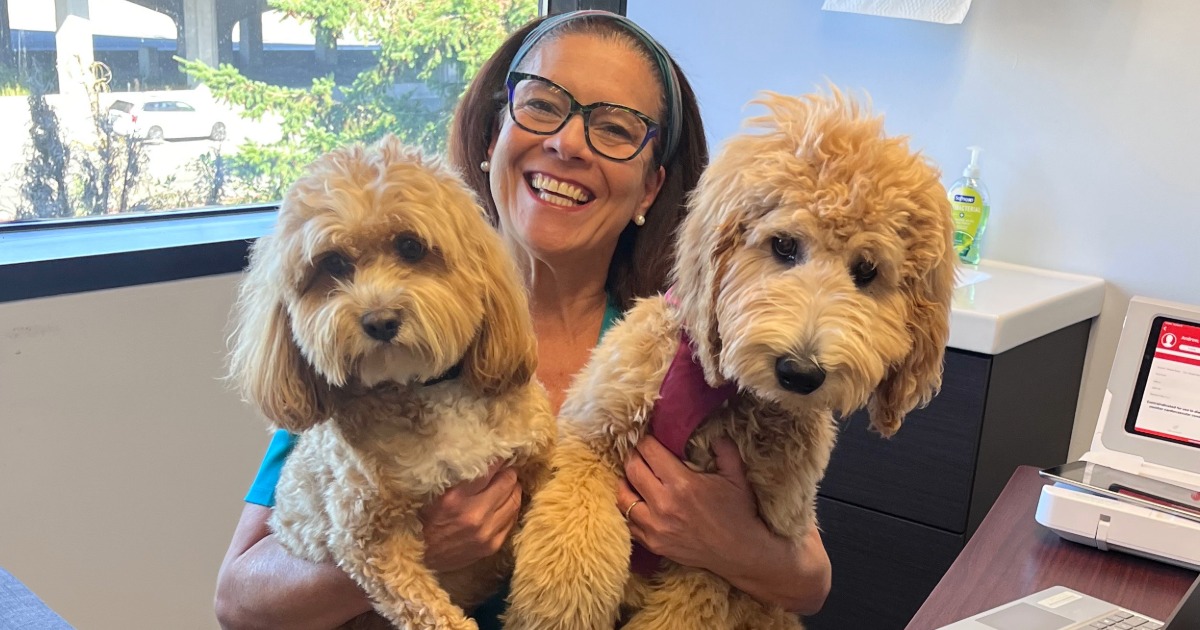
eClinicalWorks CEO and co-founder Girish Navani delivers a keynote at the company's 2025 National Conference in Orlando, explaining how doctors might appear different in exam rooms with the use of ambient technology.
Image: eClinicalWorks
eClinicalWorks' top leaders packed a series of software demonstrations into a three-hour keynote session this past week at the vendor's 2025 National Conference, which kicked off Friday in Orlando.
eCW's new AI-enabled tools and specialty care offerings aim to enhance patient outcomes, reduce physician burnout and ensure equitable access to quality care, according to Girish Navani, eCW CEO and co-founder.
Navani and other leaders from the company demonstrated three forms of ambient computing, including smart glasses for doctors and exam rooms without keyboards and LCD screens that display relevant patient health record data during conversations.
"We are in the midst of the user interface changing," he said. "It is dramatically changing right in front of our eyes."
In addition to these front-end tools, eCW said its AI-driven revenue cycle automation is showing substantial efficiency metrics for certain tasks in pilot testing, new value-based care services that identify at-risk patients and that it will release an inpatient EHR tailored to underserved hospitals in 2026.
Ambient glasses, AI-created 'podcasts'
Navani told a story about a child who was asked to sketch a doctor for a homework assignment. Instead of a stethoscope, the child drew a physician with a computer.
"That had a subtle message to it," he said, noting that as a result of digital transformation over the last two decades, every physician now walks into an exam room with either a computer or sits at a computer terminal already in the room.
Ambient computing opportunities that leverage Sunoh.ai, integrated with smart glasses, could not only transform doctors' engagements with patients in exam rooms but could also change their experience after hours or on their commutes, he said.
The integration could allow a physician to remain fully focused on a patient, because the smart glasses automatically listen while the software transcribes and generates clinical notes in the background.
They can also provide seamless, contextual access to patient data without manual navigation, which Navani showed on the stage.
"The smart wearables will become great augment devices that will facilitate a much better experience as you use them in the delivery of care inside your clinics, save your time outside your clinics and not take you away from times that matter most," he explained.
He then demonstrated how AI can turn patient call information, or practice revenue updates, into personalized, mobile-accessible and interactive telecasts that doctors and practice managers can request on demand.
Through the new Healow Genie AI-Powered Contact Center platform, automation employs AI agents to handle routine tasks such as appointment management, refills, referrals and payments for healthcare providers.
Navani demonstrated through a podcast-like experience how a voice request could improve efficiency in patient communications.
"Hey Sunoh, could you play my morning podcast briefing?" he asked the platform.
A series of time-lapse bells then played before a voice said: "Good morning Dr. Willis," and stated that there were two telephone encounters to review, three prescription refill requests, four unreviewed lab results, one unread message and nine patient appointments scheduled.
After reviewing the first patient encounter summarized by the AI platform, Navani requested that the AI agent forward the particular message to a practice staff member and assign them to call the patient back.
He then used voice prompts to pause and return to the personalized podcast live on stage.
"If I can do this for the physician, why not for the finance team?"
During a second demo, Navani pulled an example of a morning "finance podcast."
The AI voice intoned:
Yesterday, there were 68 scheduled visits with 61 checked out. We had five no-shows, which is two higher than the 30-day average of three; 46 claims were submitted, and 10 were not submitted due to errors. Co-pays were collected for 70% of visits, and Healow check-in was used for 26% of visits.
A third eCW rollout for ambient uses the computer as a visual tool for conversations with patients. No keyboard and no mouse, but a flat panel that follows along through live exam room dialogue.
The new technology, called Cards, is visually responsive to the device it would be pulled up on during a patient appointment, whether it's a tablet or an LCD screen, and is triggered by the ambient AI listening to the conversation between the doctor and patient.
"You discuss the lab results, they'll come up," said Navani.
A mock appointment live on the stage discussed a patient's recent hospitalization and the monitor pulled up the discharge summary.
Navani noted that Cards can display in smart glasses' pop-up displays as well.
VBC services, EOB efficiencies
eCW said it has rolled out new VBC services that target early interventions to improve chronic disease management and announced that a rev cycle automation being piloted this year is showing early success in slashing administrative processing times for paper explanations of benefits, a historically time-consuming task.
The AI-driven analytics tool, CIPHR, plays a crucial role in identifying at-risk patients, facilitating early intervention and tracking key VBC performance metrics, the company said in a statement.
Also, eCW's remote patient monitoring tools now support cellular devices.
The company noted that AI is needed extensively for both administrative and clinical efficiency on the RCM side, and enhancements can now manage processes, including insurance eligibility checks and appeals.
Navani told Healthcare IT News in March in a discussion about the future of agentic AI in healthcare that initial measures from its Autonomous Claims Verification pilot would vary based on the size and specialty of different practices.
This first metric, according to a representative of eCW, centers on a dramatic improvement in processing paper remittances. With AI, users testing the tool have achieved a 300% increase in efficiency when posting paper EOBs.
Enthusiastic about this first indicator of the technology's potential, the company said it currently awaits further data and feedback to fully understand the broader operational improvements and autonomous features from pilot customers.
Inpatient EHR expansion
eClinicalWorks also announced it is developing new EHR capabilities beyond traditional ambulatory care to pharmacies, emergency rooms and inpatient residential settings and will prioritize healthcare accessibility in underserved areas.
Navani said eCW expects to release the new inpatient EHR tailored for critical access and rural health hospitals next year.
Additional enhancements unveiled at the conference target nationwide interoperability under the company's pledge to support the CMS Digital Health Tech Ecosystem initiative, including an expansion of the company's qualified health information network, PRISMANet, with AI that can summarize large document sets from external systems with insights and streamlined search across internal and external data sources.
Overall, eCW has released 125 AI-driven features across its products to date, including tools to integrate transcribed data into progress notes, assist with coding and summarize information from scanned or faxed documents, according to the company.
Andrea Fox is senior editor of Healthcare IT News.
Email: afox@himss.org
Healthcare IT News is a HIMSS Media publication.


